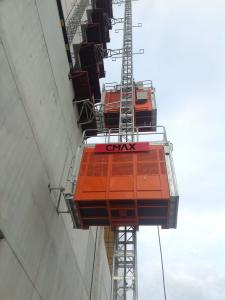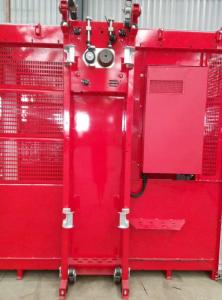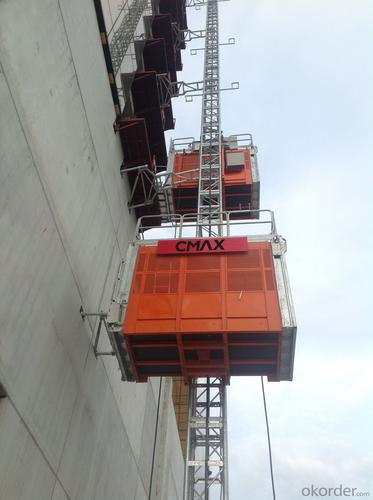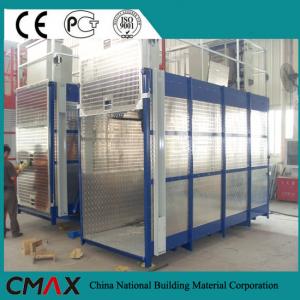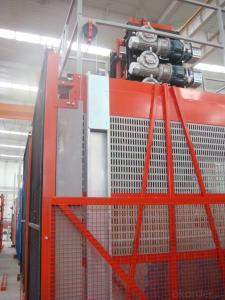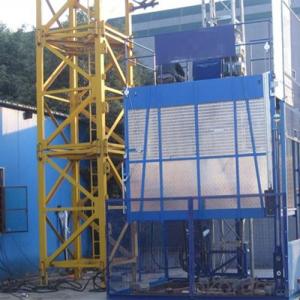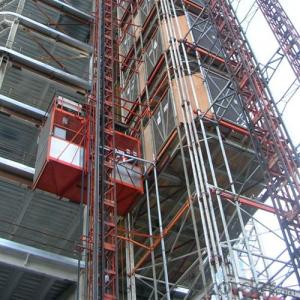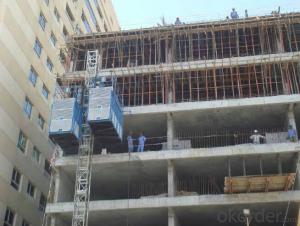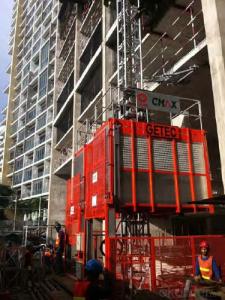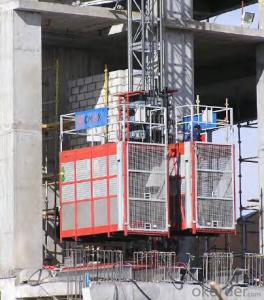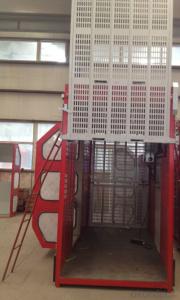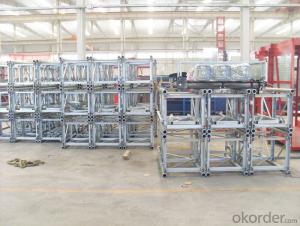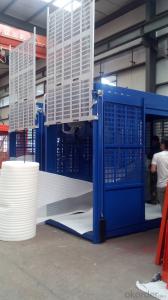Building Hoist SC200/200 with 50m Height
- Loading Port:
- Tianjin
- Payment Terms:
- TT or LC
- Min Order Qty:
- 1 unit
- Supply Capability:
- 66666666 unit/month
OKorder Service Pledge
OKorder Financial Service
You Might Also Like
Updated CMAX building hoist configuration
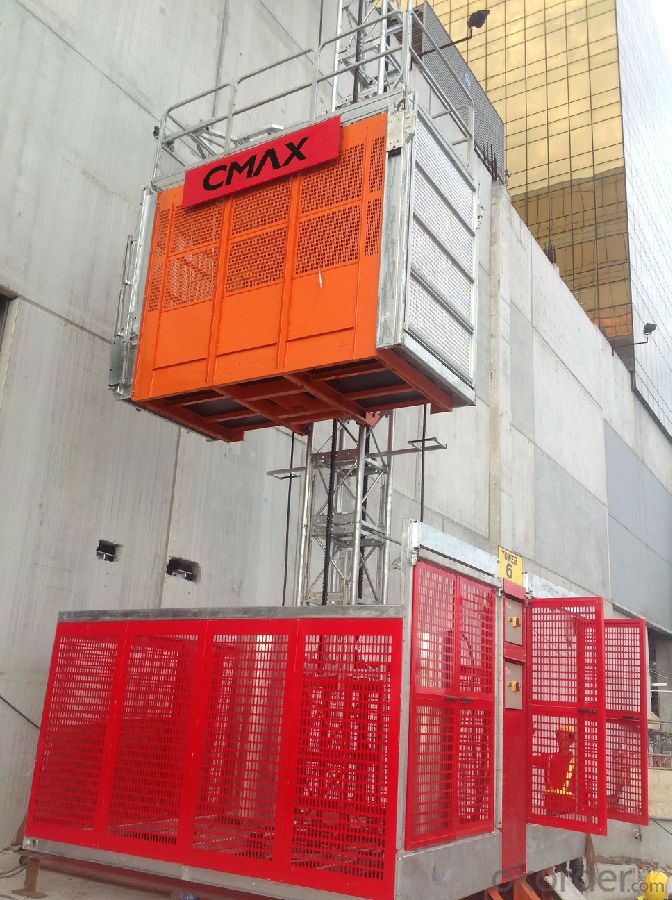
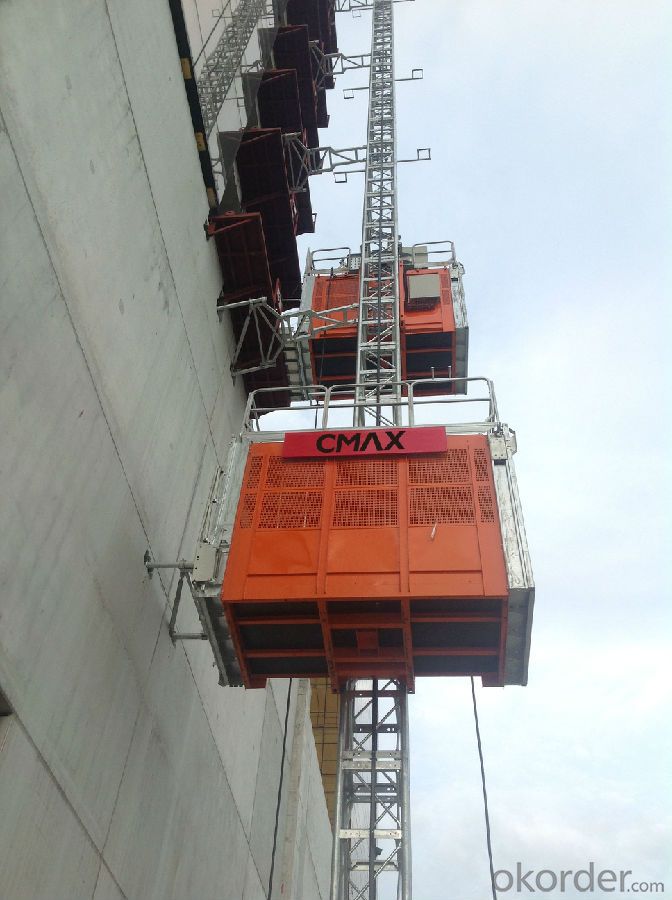
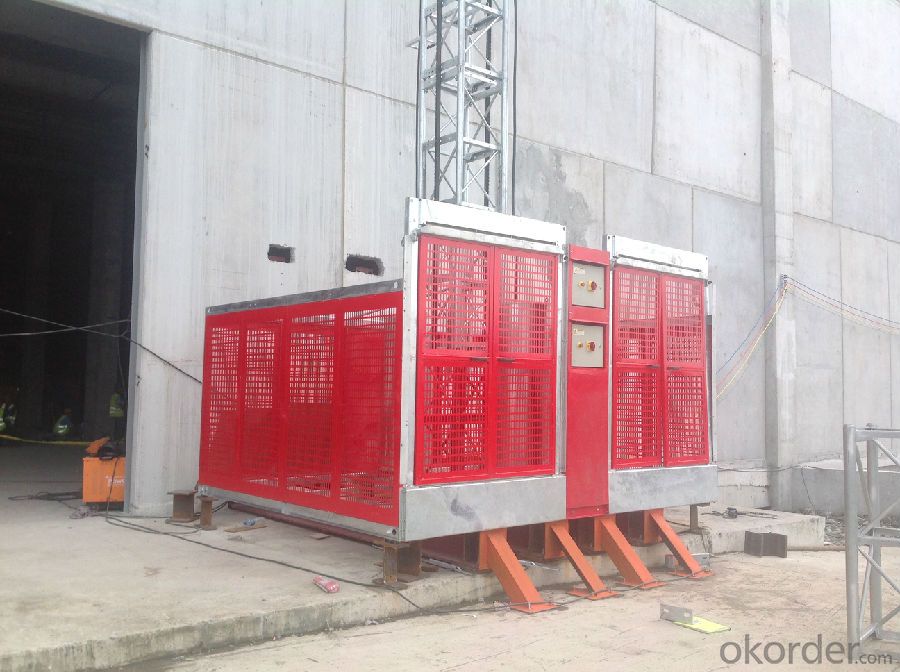
Good news that CMAX hoist technology makes great progresses in the last period, which have received warm welcome by the end-users and it is updated CMAX configuration hoist. In order to specially support our long-term potential partners
Following advantage for you kind review.
1. Hoist complete cabin and enclosure frame adopt hot dip galvanized process to provide high level rust protection and corrosion protection.
(Note: process of acid pickling before hot galvanizing)
Before, only the building hoist mast sections are adopted as hot galvanized procession; Updated configuration, not only the mast section, but also the complete cabin and enclosure frame are adopted as hot galvanized procession.
Main advantage: improve the outlook and enlarge the complete steel structures usage life by 5~10% increase.
2. Cabin exit door adopts ramping type
Main advantage: the ramping door likes a bridge between the building hoist and construction building, which normally increases around USD800 for this improvement.
3. Large anchorage frame is supplied.
吊笼规格 Cage size | L | L1 | L2 | |
Update | 2500×1500 | 2900~3600 | 1285 | 1450
|
Normal | 2500×1500 | 1800~2100 |
Main advantage: the updated configuration increase the tie-in adjustable distance from 1800~2100mm to 2900~3600mm, which normally increases around USD200/piece for this improvement.
4. The side cage produced with aluminum board with increased thickness to 3MM.
Main advantage: normally it is 2mm, updated CMAX configuration make the side wall thickness as 3mm to enhance the strengthens and wear resistance of the cabin side wall, moreover, plywood with 6mm thickness and 500mm height is add to the inside wall of the cabin to prevent the damage of the cabin side wall.
5. The floor is produced from 3MM thickness steel riffled board(Hot dip galvanized), and 15MM thickness wooden board which can reduce the vibration and deformation a lot.
Main advantage: normally there is steel board only, updated CMAX configuration adds one wooden board under the steel board that decrease the noise by at least 50% compared before.
6. Integrated electric control box
Main advantage: normally the electric box is big and the cable has to go into the electric box for connection purpose; the updated configuration makes the electric box size decrease by 10%.
7. For the main mechanic parts, bending plate structure (steel material: Q345B) is adopted, instead of angle steel or channel steel in order to improve the main steel structure’s intensity and the nice appearance.
( Note: process of steel board bending)
Main advantage: instead of angle or channel steel for main mechanic structure, bending plate steel structure not only makes the steel structure intensity increases by around 20%, but also makes the whole appearance more attractive after painting.
Thanks for choosing CMAX updated configuration building hoist. It is believed that your esteemed company will be more competitive with our qualified products and after-service.
- Q: Describe the routine maintenance and inspection procedures for a building hoist.
- <p>The maintenance and inspection process for a building hoist involves several key steps to ensure safety and functionality. Regular visual inspections should be conducted to check for any visible damage or wear. Monthly inspections should include testing the emergency stop and limit switches, as well as lubricating moving parts. Quarterly inspections may involve checking the electrical connections and verifying the correct operation of safety devices. Annual inspections typically require a thorough examination by a qualified person, including testing the load-bearing capacity and ensuring all safety features are in good working order. Additionally, records of all inspections and maintenance should be kept for reference and compliance with safety regulations.</p>
- Q: The construction elevator always jumps
- Possible causes include: 1, the area that has broken skin in the line, leak the electric trip. There's something wrong with the switch Loose contact points in the line, and bad contact may also jump. It is best to do a thorough examination before closing the lock, and the forced closing is dangerous
- Q: Why do you ask the construction elevator to be a certain distance from the structure? Is very close to if not you can not bother to do delivery channel security protection or something, out of the elevator out directly, and attachment should be able to get more easily, to solve. Thank you very much!!
- The country stipulates that the distance between the moving parts of the elevator and the building and the fixed construction equipment should not be less than 0.25 meters. It's mainly about safety.
- Q: What are the primary materials and components typically utilized in the construction of building hoists?
- <p>Building hoists, also known as construction hoists, are typically made from a combination of steel, aluminum, and sometimes plastic. The frame and main structure are usually constructed from steel for strength and durability. Aluminum is often used for components like the platform and railing due to its lightweight properties, which can reduce the overall weight of the hoist. Plastic components may be used for certain parts to enhance resistance to weather and corrosion. Additionally, hoists may incorporate electrical and mechanical systems, which include cables, gears, and motors, to facilitate the hoisting and lowering of materials and personnel.</p>
- Q: Is it possible to use a building hoist for the purpose of lifting heavy objects?
- <p>Yes, a building hoist can be used for lifting large objects. These hoists are specifically designed to handle heavy loads and are commonly used in construction for lifting materials, equipment, and other heavy items. They are engineered with safety features to ensure secure lifting and are operated by trained personnel. However, it's crucial to ensure the hoist's capacity matches the weight of the object being lifted and that all safety protocols are followed to prevent accidents.</p>
- Q: This question asks for the safety precautions that should be taken when operating electric-hydraulic construction hoists.
- <p>Safety measures for using electric-hydraulic building hoists include regular maintenance and inspection to ensure all components are in good working order. Operators must be trained and certified, following all safety protocols. Never exceed the hoist's load capacity. Ensure that safety hooks and chains are in place and secure. Keep the hoist area clear of debris and unauthorized personnel. Use proper lifting techniques and avoid sudden starts or stops. Always inspect the load before lifting to ensure it is stable and secure. Emergency stop switches should be easily accessible. Ensure that all safety guards are in place and functioning properly. Adhere to all local regulations and manufacturer's guidelines.</p>
- Q: The construction of more than many floors must be used for construction elevators
- Elevator drivers must be trained in special safety technology, qualified for examination, and will be on duty. Strict drunken work. The driver must be familiar with the performance, construction, maintenance and maintenance of the elevator, and fill in the mechanical resume and the required reports in time. No inflammable, flammable goods and other sundries shall be piled up in the vicinity of 5m in the construction elevator, and no ditch, pits, or groove shall be dug in this area. The floor feed of the elevator should be set up for protection. When the cage is repaired, if the parts are removed and the weight of the ladder is below the weight, the ladder cage must be locked in the rail. It is strictly forbidden to use the shaft of the construction elevator to support the cable line and other items not related to the elevator. A tower crane or other lifting machine that is built on the same site shall be more than 5m above the elevator and should be properly protected against collision. After the construction elevator is installed, it must be checked and approved by the relevant personnel.
- Q: This question asks whether a double-rope lifting system can be safely and effectively used in both indoor and outdoor environments, specifically during windy conditions.
- <p>A double-rope lifting system can be used both indoors and outdoors, but its use in windy conditions requires careful consideration. Indoors, it is generally safe and effective. Outdoors, windy conditions can pose challenges. High winds may cause the load to sway, potentially leading to accidents. Therefore, it's crucial to adhere to safety guidelines, which often recommend not using such systems in winds exceeding certain speeds, typically around 20-30 mph. Always check the manufacturer's specifications and local regulations for safe operating conditions.</p>
- Q: Is it possible to use a building hoist to lift various types of materials?
- <p>Yes, a building hoist can be used for lifting different materials. It is designed to handle a wide range of loads, from construction materials like bricks and cement to heavy equipment. However, it is crucial to ensure that the materials being lifted are within the hoist's weight capacity and that they are properly secured to prevent accidents. Always follow the manufacturer's guidelines and safety regulations when using a building hoist to lift various materials.</p>
- Q: How many meters is the wall of the construction elevator?
- I know the bunter lift is six meters so you can get it
Send your message to us
Building Hoist SC200/200 with 50m Height
- Loading Port:
- Tianjin
- Payment Terms:
- TT or LC
- Min Order Qty:
- 1 unit
- Supply Capability:
- 66666666 unit/month
OKorder Service Pledge
OKorder Financial Service
Similar products
Hot products
Hot Searches
Related keywords
